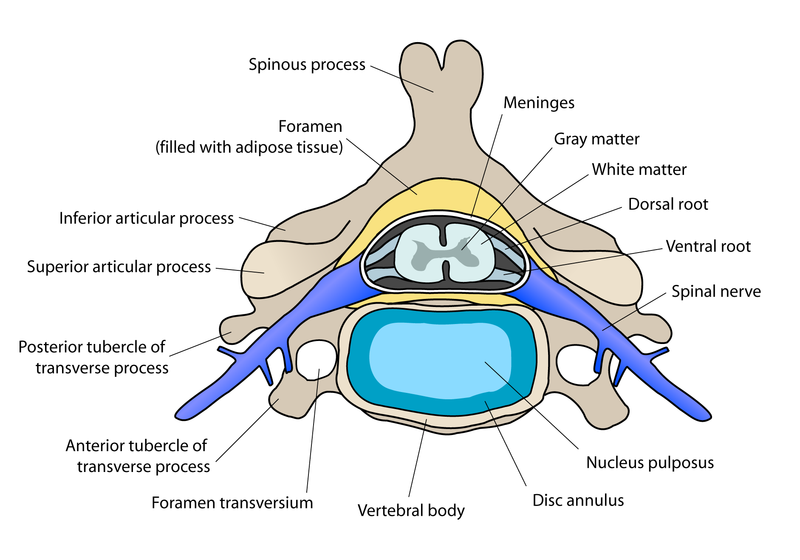In a post I had written before which was entitled “Osteogenic Protein 1 OP-1 Or Bone Morphogenetic Protein 7 BMP-7 Can Increase Intervertebral Disk Height (Important)” I had shown that an injection of BMP-7 (aka OP-1) into the intervertebral disk nucleus pulposus resulted in vertebral height increase and disk regeneration.
At the time, I felt that the post was the most significant discovery of a possible way to increase height since the experiments on rabbits who suffered disk degeneration was so effective. From just one injection of OP-1 the effect on disk regeneration and also disk height increase lasted for upwards of at least 2 weeks in all of the experiments.
What I was thinking at the time was moving from the rabbit model into the human subjects. If we took subjects who were suffering from disk degeneration and injected OP-1 into the their disks, would it result in long term effects or would we have to consistently over time keep on adding the OP-1. Plus, there were studies which showed that if you use a needle to punture the disk, you could cause complete lumbar collapse, disk lose, and other horrible problems.
Right now in my research, I was thinking of trying a more noninvasive approach which is to take capsules or implants which you can place around the said disk which has a semipermeable membrane which allows for the OP-1 to only diffuse in one direct from a concentration gradient. at this point I would guess that the intervertebral disk is made of a type of collagen fiber which is permeable. From my past with guages and biomedical application, I would be even willing to suggest trying out a patch or guass you can directly apply to your back side which can absorb the BMP-7 concentratin through the skin and reach the disk.
From this source HERE we learn that…
The discs in your spine are made up of the inner, gelatinous nucleus pulposus and the outer annulus fibrosus. This outer ring is a firm, ligament that encloses the spongey nucleus and prevents it from herniating or bulging beyond its normal perimeter, according to Jack Zigler, M.D. on the Spine-health website. The annulus also disperses the pressure on the vertebrae caused by weight-bearing activities. If the annular fibers stretch or tear, the nucleus can herniate, which may lead to back pain and sciatica.
From this source HERE we learn that…
ANNULUS FIBROSUS
The intervertebral disc is made up of two parts: the annulus fibrosus and the nucleus pulposus. The annulus fibrosus is the outer layer of the disc that encompasses the gel-like nucleus pulposus inside the disc. Made of strong layers of collagen fibers woven together at varying angles, the annulus fibrosus gives structure to the disc and allows for even weight distribution of surrounding vertebrae.
Though designed to endure relatively great amounts of pressure, over time the annulus fibrosus begins to lose flexibility and elasticity, leaving it vulnerable to damage. A weakened intervertebral disc can begin to “bulge,” causing a bubble of nucleus pulposus material to protrude in the outer layer. In some cases, a bulging disc can turn into a herniated disc, which is when the annulus fibrosus wall completely ruptures and releases nucleus material into the spinal canal. Depending on the amount of disc material placing pressure on the spinal cord and nerve roots, symptoms can range from mild to severe.
While intervertebral disc damage is often a result of aging and normal wear and tear to the spine, there are steps you can take to mitigate it. Exercising and maintaining a healthy body weight will help ensure your spine is adequately supported and decrease the amount of pressure placed on the annulus fibrosus of each disc. Since cigarette smoking decreases the amount of water in the discs, it can actually cause discs to degenerate faster, so you also should avoid smoking. Finally, maintaining correct posture and using proper body mechanics when lifting, exercising, or sleeping will minimize your chances of developing a disc problem.
 This picture taken from Wikipedia link HERE .
This picture taken from Wikipedia link HERE .
What is important to note is that the back is not completely made of irregular vertebrate bone. There are the areas of disks which we might be able to manipulate.
The disk annulus is made of collagen fibers that seems to connect at an angle. The composition is a lot of water. If the disk is permeable of a certain we should be able to get salt into it using a concentration gradient, and then use water into the disk through another semipermeable gradient that only allows water to go through.

Pingback: Complete List Of Posts - |
Pingback: The Chondrogenic Ability Of BMP-7 or OP-1 - Is This The Strongest Growth Factor
Pingback: The Chemical That Would Make Adults Grow Taller Has Been Found